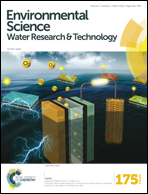Pretreatment of natural organic matter to control biological stability
Abstract
Application of UV/H2O2 process for degradation of micropollutants in surface waters could deteriorate the biological stability of treated water. This is because of the partial oxidation of natural organic matter under the applied UV/H2O2 conditions that in turn leads to an increase in assimilable organic carbon (AOC). To address this issue, alum coagulation was investigated as a NOM pretreatment alternative prior to the UV/H2O2 process in order to improve the treatment efficacy and water quality. A recently developed technique was utilized to rapidly assess the AOC of the treated water at various stages. Alum was effective in removing a substantial portion of large to medium molecular weight organic molecules leading to a considerable reduction in AOC. However, the fractions not removed by coagulation were shown to promote some levels of bacterial regrowth after undergoing subsequent UV/H2O2 treatment. That said, alum pretreatment was found to be an effective strategy for reducing the formation of AOC by 14 to 40% depending on the water used and UV dose applied. The findings of this study are of interest for utilities that already have coagulation in use and seek to comply with more upcoming stringent regulations by incorporating advanced oxidation processes (e.g., UV/H2O2) in their treatment train.


 Please wait while we load your content...
Please wait while we load your content...